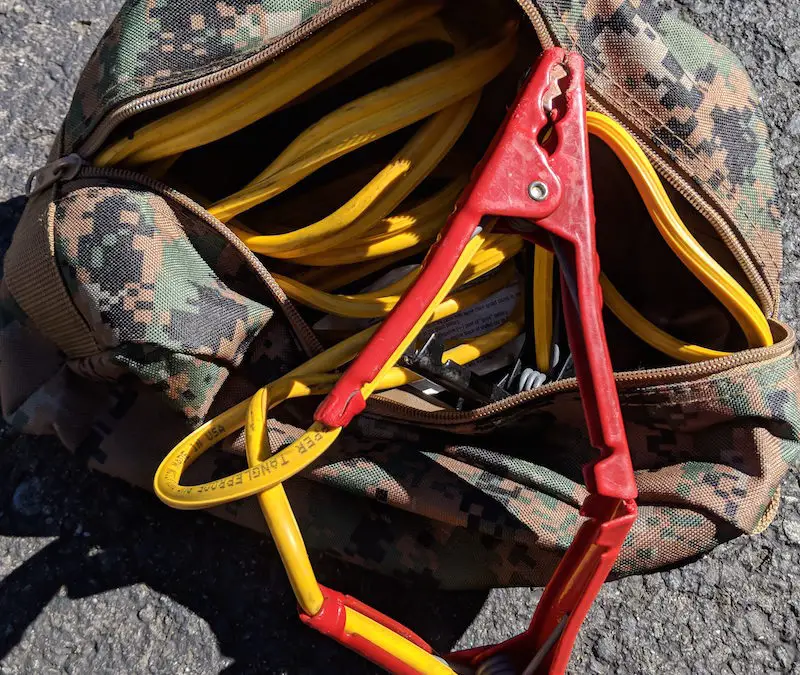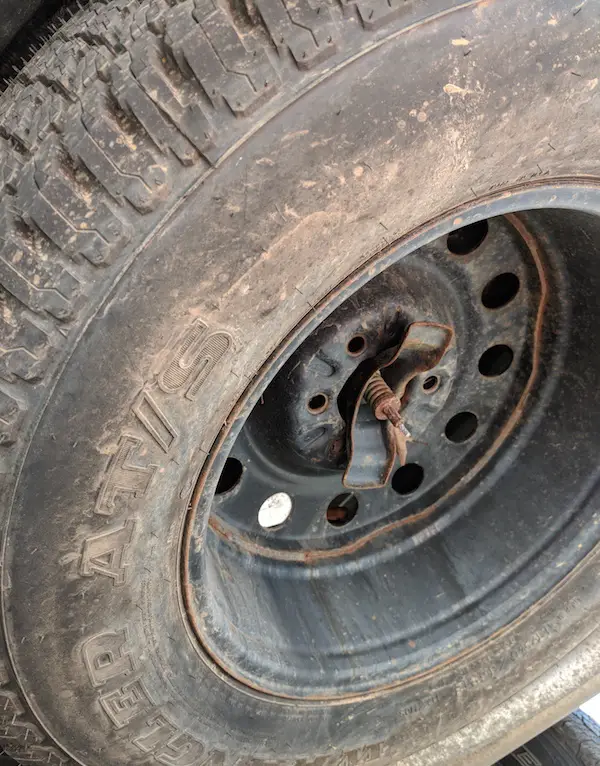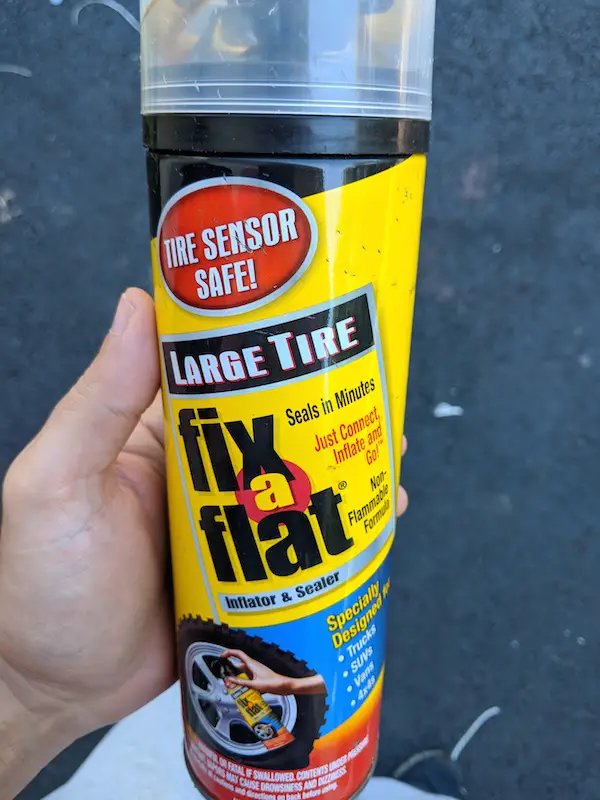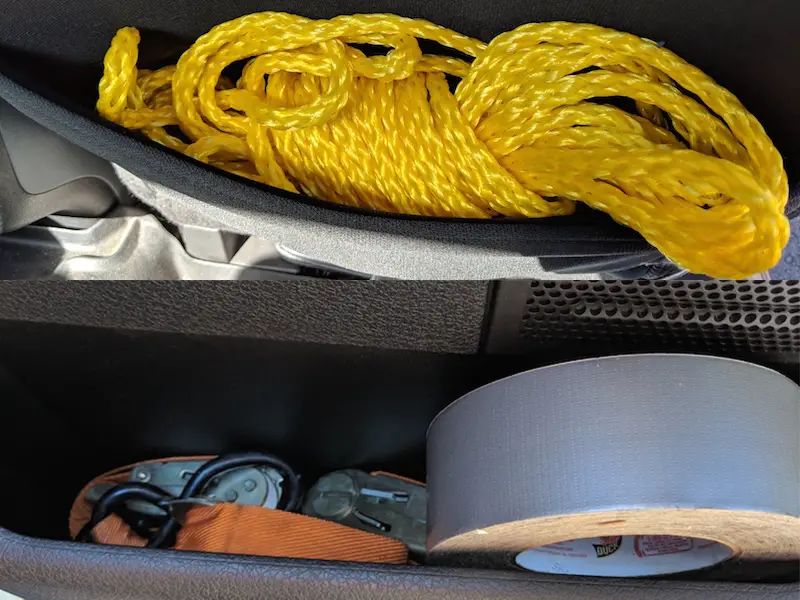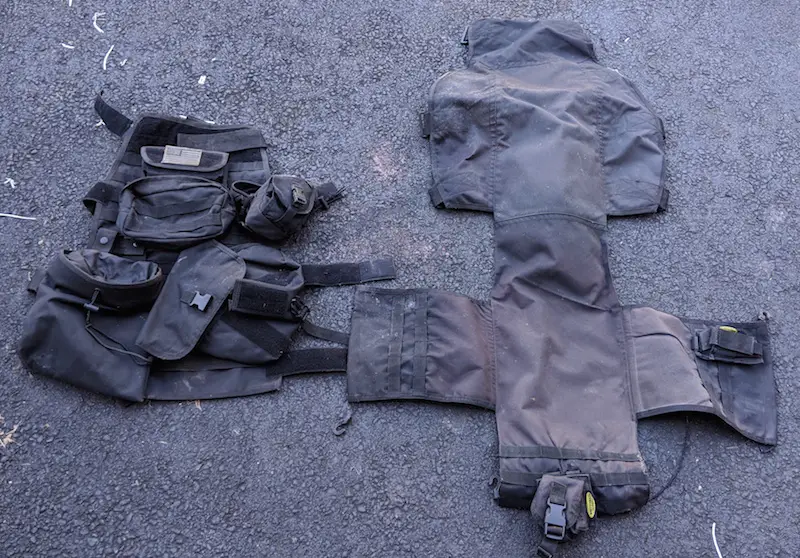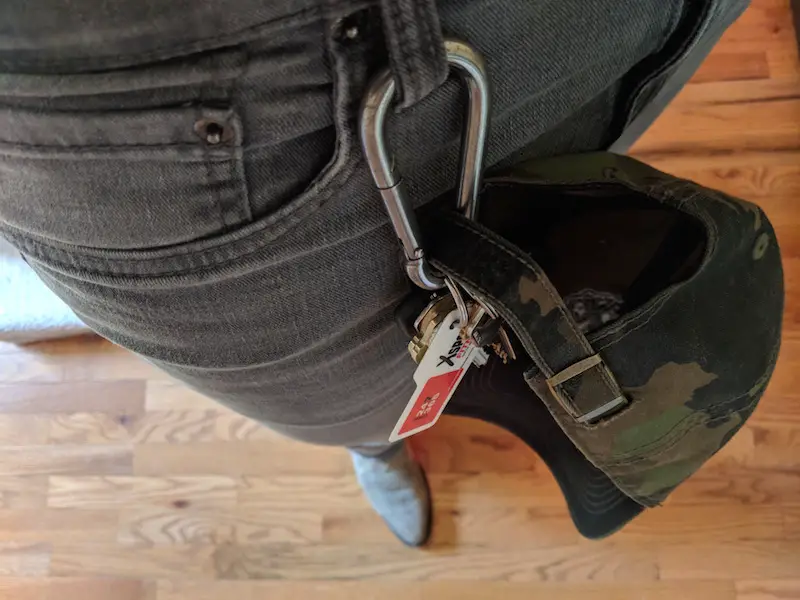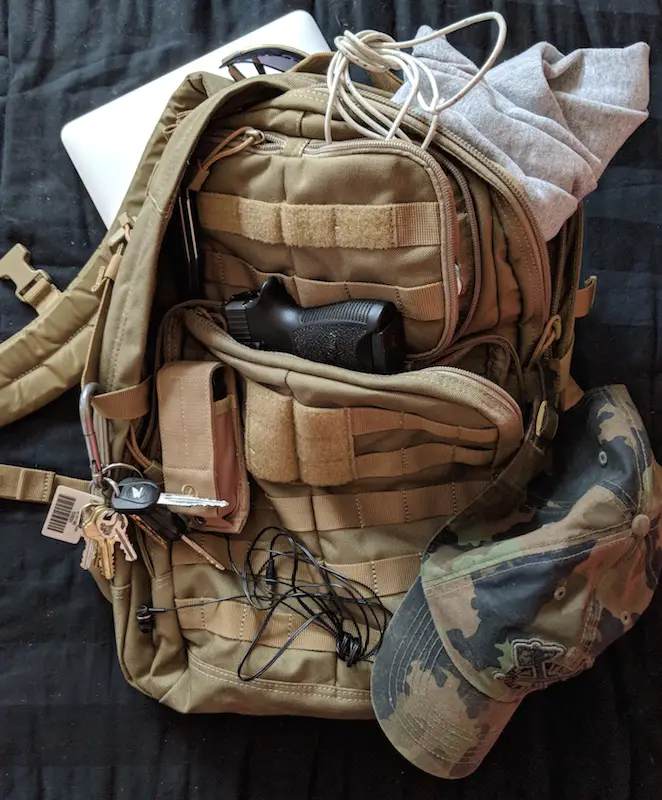Road hazards are no surprise for most of us. Every day we face a multitude of dangers on our local streets and highways. Flat tires, vehicle breakdowns, and automobile accidents are all par for the course. Fortunately, there are things we can do to prepare for the scenarios we’ll likely face along our daily journeys.
Many people wonder, what are important items to everyday carry for a car? It is important that every vehicle have a spare tire, a jack, tire iron or socket wrench, jumper cables, and road flares. However, these are just the bare minimum of your kit. Developing your kit out will depend on a number of factors, including your vehicle type, common environmental conditions, and your own personal requirements.
Table of Contents
Knowing Your Vehicle
Being able to handle a roadside emergency begins with understanding your own vehicle. Knowing the basics of operating and maintenance go a long way in making short work of an otherwise problematic situation. Having a thorough understanding of your vehicles storage limits, weaknesses, and general layout will help immensely.
Basic Functions
Every vehicle should come with some basics for roadside maintenance. Spare tires, for example, are commonplace on most vehicles. Do you know where it is kept on your vehicle? Do you know how to access it and remove it for usage? Knowing whether you have a full size spare tire, or a “donut” will also give you insight into how long you’ll be able to safely drive on your spare tire.
Knowing where your spare tire is, and being able to change a tire are not the same. Do you know where your jack points are? If not, consult your vehicle owners manual and familiarize yourself with the process of raising your car to replace the tire.
Beyond knowing how to change a tire, you should be able to access your engine compartment. Some vehicles require you to release a preliminary latch before the hood on your vehicle can be lifted. Sometimes these latches are found in the interior of your car. Others have external latches that must be released before raising the hood.
Once you know how to release, know how to raise your hood and keep it open. Does it have a prop rod, or are there hydraulic arms that keep the hood open? Being able to safely view and work on your engine compartment. Once you’ve figured out how to get into your engine, you’ll want to know the location of several important components.
Here’s a list of a few:
- Oil Cap – You’ll need to be able to open this to provide your vehicles life blood!
- Fuse Box – Controls vehicle electronics, including your lights and wiper system.
- Radiator Cap – Open this to add coolant to your engine. Use caution as contents are under pressure and VERY hot if the car has been running!
The Drivetrain
Another major difference between vehicles is the drivetrain. This is basically what gives your vehicle the power to move forward. There are two different types; four wheel drive (4WD) and two wheel drive (2WD). Many four wheel drive vehicles are select-able, meaning that they operate in a 2WD unless they are put into 4WD. If you own this type of vehicle, use the owners manual to familiarize yourself with how to engage your 4WD. Vehicles equipped with 2WD are either front or rear wheel propelled. It’s worth noting which your vehicle has. We’ll cover why in a later section.
Great, now you’re familiar with your daily transportation. However, we still need to discuss creating and storing your kit!
The Basics: Everyday Carry For Your Car
Some things in your must have EDC vehicle kit come stock from the manufacturer. More than likely they’ll provide you a spare tire (either full size spare or donut), some type of jack, and a way to remove the tire like a tire iron. While these tools are essential, they are rarely optimal.
1. Full Size Spare Tire
I’m a big proponent of a full size spare, because it doesn’t limit the range you can drive before needing replacement. When you’re on a back country road and the nearest town is 60+ miles from you, using a donut spare tire can be sketchy. Most of these types of tires are limited to a distance of 50 miles, and restrict your speed to 55 MPH or less. If you’ve ever seen one, you’d understand why.
Check whether your vehicle is capable of housing a full size spare before making the purchase. However, if it can accommodate a full size tire, I highly recommend getting one. Some vehicles, like my F150, come with a full size spare already (pictured above). Chances are if you’ve got a truck you’ll find it underneath the bed. Most cars have the spare tire in the trunk.
2. A Car Jack
Alright, this seems like a no-brainer, and typically your manufacturer will provide you a way to lift your vehicle off the ground to replace your tire. However, choosing your own comes with certain benefits not offered from the manufacturer.
There are 3 different types of jacks available to you. The first, is the scissor jack. Turning the crank causes the lift to rise and subsequently, your vehicle. Contact with the ground surface is minimal. However, this is a purely mechanical device, no fluids, or other points of failure.
The second is the bottle jack. This is a hydraulic jack, and provides excellent lifting power in a small package. To operate, lift and lower the lever to raise the jack. Fluids are pumped through the system causing the jack to rise. Bottle jacks typically have a height limit and aren’t appropriate for some taller vehicles. This version from Powerbuilt (Amazon link) has a built in jackstand.
Finally, you have the floor jack. Essentially, this is a beefed up version of the bottle jack and works on the same principle. However, unlike the bottle jack, you can easily re-position the jack because it has wheels to allow you to move the vehicle. On wide shoulders this can be easily used to lift and lower your vehicle.
While the floor jack is a bit heavier and bulkier, if you have the room for storage it will make things much easier on you. I recommend the Liftmaster Hydraulic floor jack, available on Amazon, for your everyday carry for your car should it meet the weight limit requirements.
3. Socket Wrench and Sockets
Another upgrade from the freebie version that the manufacturers supply you is a set of sockets and a socket wrench. Sure your tire iron will work, and probably give you decent leverage. However, a socket wrench and different sockets will give a wider array of tools to address other roadside problems. I recommend a 1 inch drive, since it’s more appropriate for heavy duty applications like tightening lug nuts.
4. Jumper Cables
Nothing is worse than getting back out to your car after a long day at the office to realize you left your door cracked or the dome light on. Turning over your engine with a dead battery isn’t going to get you anywhere. Hopefully there’s a good Samaritan nearby who can give you a jump. Don’t rely on them to have the necessary tools, keep a set of jumper cables as part of the everyday carry for your car.
I recommend getting the longest set you can find. Having to get the front bumpers to kiss in a crowded parking lot can be difficult, and heaven forbid you need a jump anywhere on, or near, a busy road. I had to jump a broken down car in the middle of a snowstorm at a crowded intersection in case you’re wondering when this might ever happen!
Here’s a pro tip, you can chain sets together to make an even longer set of jumper cables. Just make sure that like colored terminals attach to one another (e.g. red to red and black to black). It’s a great addition to everyday carry in your car.
Once upon a time, someone was helping my girlfriend jump start her Jeep and crossed the terminals. I came out to check on things just in time to find the mistake, and those handles were HOT! I had to use an old sweatshirt to get them off, and the rubber grips on the handles melted. This is just a cautionary tale of what happens when the current gets crossed.
5. Road Flares
Should you ever end up on the side of my road with a broken down vehicle you better have some road flares. Now they make battery operated lights that serve the same purpose. I live on a country road, there are more blind curves and hills than I’d care to count. If you want to end up avoiding the fate of so many squirrels on the road, it’s best to let traffic know there’s a hazard ahead! If you aren’t comfortable carrying around something flammable, check out these road flare lights on Amazon. Be warned, that they are bulkier than their flammable counterparts.
6. Rubber Floor Mats
I know what you’re thinking, “why do I need rubber floor mats?!” Well funny story, I was doing some off road wheeling with a buddy of mine some years ago, and one of us got stuck (hint: It was me). Anyways, after laughing for a bit, he told me that I didn’t need his help to get my vehicle out.
He took out my passenger side floor mat, wedged it under the rear tire, and told me to try again. After a couple attempts, I got my vehicle out. The floormat was no worse for wear. Basically, on loose dirt, the mat offered traction to my poor tire when it wasn’t finding any. Of course, you could use this in a pinch if you’re out in a snowstorm without 4WD, but it’s more of a last ditch effort rather than a priority fix.
Remember how I mentioned in the “Know Your Vehicle Section” that drivetrain is important. Well, if you put the mat under a tire that’s not receiving power you won’t get the intended effect.
I’ve upgraded from the Walmart special versions of floor mats to these versions from Weathertech on Amazon. They’re molded to fit my 2014 F150, but they make a bunch of different fits. My mother put me onto this company after buying some for her van.
7. Fix-A-Flat
Assuming you have a full size spare, this one may be optional for you. However, if you’re nervous about surrounding traffic or aren’t confident in your ability to change a tire then this is nice to have.
Basically, this kit will plug small holes and re-inflate the tire to the point that you can hobble over to the nearest auto shop for assistance. It comes in a can with an applicator attachment to use with your tires valves. I wouldn’t rely on this to get you that 60+ miles on a country road though! Also, you’re kind of at the mercy of the mechanic at that point.
8. Seat Belt Cutter/Glass Breaker
Chances are you already have this at your disposal. Many pocket knives, and multi tools, come with these tools built in. However, if you don’t have one in your EDC pack, it’s worth leaving one in your vehicle for emergency situations where you need to evacuate your vehicle.
9. Bungee Cords, Ratchet Straps, and Rope
If you’ve seen “Boondock Saints” you know that “Charlie Bronson’s always got rope!” Why wouldn’t you include some kind of fastener in your vehicles EDC kit? I’ve got all three of these in my truck (because I practice what I preach). The rope has come in handy to tie down furniture. However, it’s also helped me form a makeshift shelter when I’ve been out camping. There’s a million and one reasons to keep some rope around.
Of course, the same goes for bungee cords and ratchet straps. Depending on the size and weight of whatever is being hauled in the bed of my truck I will opt to use different fasteners. Choices are always good, especially if you’ve got the space. Even smaller vehicles could use one or more of these handy tools. You never know when your spouse is going to impulse buy you that 60″ TV you’ve been eyeing, and it’s on you to figure out how to haul it home in that Honda Accord!
Advanced: EDC Vehicle Kit
Now that we’ve handled the basics, we’re moving onto the finer points of EDC Vehicle kit loadouts. The basics section is great for most of the common problems you’ll encounter on daily drives. However, in more extreme cases, or for extra preparedness, these are items you should consider to everyday carry in your car.
1. Extra Water
Assuming you stay hydrated, you’ll probably have some amount of water on you at all times. However, keeping a few extra 20 oz. bottles can do wonders for your vehicle in a pinch. If you need a little extra washer fluid, try adding some water to your reservior.
You can also use water to replenish your radiator fluid. Because it is a closed system, adding water to existing radiator fluid can help you limp your vehicle to a shop or your home garage in a pinch. Just make sure there’s no leaks since the water will evaporate quicker than the radiator fluid mixtures.
Also, if you’re stranded, having some drinking water is highly advisable. For those with young boys, the empties can be used as a portable bathroom. Furthermore, cut the top off of empty bottles to make a small funnel for pouring in extra fluids like oil.
2. Extra Vehicle Fluids
We’ve already talked about using water to top off some of your fluids. However, there are times when water just won’t do. Any oil based product your vehicle uses cannot benefit from adding water. First and foremost, I recommend having extra oil. It’s the life blood of your engine, and you won’t be going anywhere without it. Furthermore, pushing your vehicle too hard without enough oil can lead to engine damage like warped pistons or even a cracked block!
Another fluid that’s worth keeping handy is your brake fluid. If a line ever gets torn or sliced and you’re able to repair it, you’ll need to replenish the fluids before your brakes work again. I’m not sure if you’re aware, but you need brakes to stop your car (sarcasm).
Finally, you can keep a bottle of power steering fluid. This one isn’t as essential as the others, because you can still steer your car without it. However, power steering does make life a lot simpler. Both power steering and brake fluid come in small containers that can easily be stored with your EDC vehicle kit. Oil however is a bit bulkier, so you’ll have to plan your storage of this item carefully.
3. Fire Extinguisher
“I have made fire” is not what you want to be saying where your vehicle is concerned. Assuming the fire is small, it’s worth having a small fire extinguisher to help prevent the total destruction of your car. There’s plenty of videos on Youtube of cars engulfed in flames, and chances are they could have been salvaged had the owner carried an extinguisher in their EDC vehicle kit.
Having owned a Jeep Wrangler, I picked one up for trail riding. However, keep in mind you’ll want some kind of bracket (Amazon link) to mount the fire extinguisher with so it’s not rolling around your trunk or back seat.
4. Multitool
Having a multi tool is a must if you know your way around a vehicle. Check out the recommended tools section for the version I everyday carry. It’s got a ton of tools that are helpful when restoring your vehicle to an operable status.
While you’ve got the socket wrench for tackling bolts, a multi tool allows you to cut or strip wires on the fly. You’ll also benefit from the pliers for those hard to grasp cables or stubborn fuses that refuse to loosen up. The Leatherman I use also has a wire brush attachment area. Initially, I figured this was best for firearm maintenance, but in a bind could be used to clean battery terminals (assuming you’ve got the brush handy).
Simple tools like screwdrivers are often overlooked, and you may need them to access trouble spots on your vehicle. Having a multi tool makes it possible for you to remove any panels or other items preventing you from getting you where you need to be. Furthermore, many come equipped with seat belt cutters and glass breakers, which we mentioned in the beginners section.
5. Vice Grips
More commonly known among my buddies as the “man tool” (I know it’s not PC), it’s the best tool you can have in your garage. It stands to reason that having a set of vice grips in your vehicle EDC kit is equally as important. With an adjustable clamp, it will help you grab onto items, both big and small. Vice grips have some serious…well…grip.
I’ve used this tool to hold onto nuts while I loosen bolts, grabbing sharp jagged pieces of metal, and a bunch of other uses. While it doesn’t provide the versatility that a multi-tool offers, sometimes you just need one! I recommend one with a rubber grip, because if you’re doing it right, this thing will be difficult to clamp.
6. Duct Tape and Zip Ties
Ahhh, good ole’ duct tape. Whether it’s around the house, or in your car, duct tape literally holds the world together. Beyond using it to bind wounds (assuming you have some gauze handy), duct tape can be used to seal rubber components on your vehicle. I managed to tear the rubber pipe coming out of my radiator while on a trail ride, and used some duct tape to bandage it up. After refilling my radiator, I was on my way.
Zip ties are in the same family as duct tape, and are versatile for clumping hanging wires to other clusters. Also, you can chain them together to hold a dangling cable to the frame. I carry the oversize versions just in case, but you get fewer per package. Just having some available will come in handy in ways you can’t imagine.
7. Fuses
Fuses control all of the electronic components in your car. Whether your lights fail you on a back road at night, or your windshield wipers fail you during a storm, chances are the fuse is to blame. Keep a kit of these guys in your glove compartment or center console. You’ll need to consult your vehicles owners manual to understand which fuses control what functions in your vehicle. From there just pop out the old and replace with a new one. Just make sure the current ratings match and you should be fine.
Hint: You may find it easier to open up your fuse box with your multi tools flat head screwdriver.
8. First Aid Kit
If you haven’t checked out my article on building a medical kit, you should. Regardless, keeping some kind of first aid equipment on hand is recommended. I’ve gotten more than a few bloody knuckles from tinkering under the hood of my vehicle. Keeping bandages, gauze, and medical tape on hand will take the sting out of having to fix your car on the side of the road.
The exterior of vehicles is dirty, and chance are you’ll end up with some of the caked on grime on your person. It’s worth adding a small container of Gojo to help strip grease from your hands before applying some kind of disinfectant.
While I hope you never need to use any of the life saving supplies, the possibility exists that you’ll need them in an accident. Even changing a tire on the side of the road comes with the risks of being hit or run over by another motorist. If you don’t already have one in your EDC pack, definitely keep one in your car!
9. Tire Inflation Kit
So here’s a nice little addition for your everday carry needs. A tire inflation kit uses your cars cigarette lighter port to power a mini pump. My girlfriend had a Nissan 350Z that had a slow leak in one of her tires. She used this little guy from Amazon to inflate her tire rather than spend $1.50 every week. You can probably find a comparable model at your local vehicle supply shop.
You can use this in conjunction with the Fix-A-Flat from your basic kit to make sure you tire has enough air to get your to your destination. Make sure you don’t over-inflate your tires. Check the owners manual for proper inflation PSI. Another place to check is the frame of your car door, just open it up and there is probably a sticker with recommended inflation minimums and maximums.
10. Tow Straps or Chain

A picture of my tow chain. I recommend a chain with hooks on both ends, and at least 20 feet in length
During the winter months in particular, you may come across another motorist who is stuck in a ditch. However, heavy rains can also make for dangerous road conditions. If you have a vehicle capable of putting a stranded motorist back on the blacktop, you don’t want to be limited by the tools at your disposal.
I prefer chains to tow straps, but it’s really more a of a personal preference. Make sure you anchor onto something sturdy on both your vehicle and the one you are attempting to help. I typically opt to attach onto my tow hooks, and the axle on the vehicle I’m pulling out.
Weather Dependent Kit
1. Kitty Litter/Sand
You may be wondering why I’ve included kitty litter as part of your kit. If you’ve got the room to throw a bag in your trunk it can help under icy conditions or any other instance where traction is a problem. It’s also great for soaking up oil and other fluids that may be present at the scene of an accident. Just dump the bag on the oil spill, and grind up the granules with your boot heel. After all, there’s no sense in adding other motorists to an already bad situation.
I keep a couple bags of sand in the bed of my truck. Not only does it help under bad weather conditions, but helps me weigh down items I pick up at the local hardware store. I throw the bags on sheets of drywall, or lumber, to keep them from shifting in the bed of my truck.
2. Tire Chains
Wintertime is the bane of many drivers existence. Plowing through snow, and the risk of getting high centered on a snowbank is not the ideal situation for most. If you don’t have mud tires or a rig built for riding trails, these scenarios are a very real possibility. Help increase your traction with a set of tire chains like this set found on Amazon.
You can probably get away with a pair of them, but you’ll need to know what type of drivetrain your car has (4WD or 2WD). If you’re vehicle is 2WD make sure you know if it’s front or rear wheel drive.
3. E-Tool (Shovel)
If you get stuck, it can be embarrassing to ask fellow drivers to assist you. However, packing an E-tool or camping shovel will make you more self sufficient. Of course, you’ll need to put a little elbow grease on things to dig yourself out of a jam, but it’s better than waiting around for help to arrive.
Storing Your Vehicle EDC Kit
Unlike your EDC bag which has a very limited amount of space, your vehicle has space in droves. The key to unlocking your cars potential is knowing how and where to store items. Take the same approach I describe in my EDC bag setup article, and group similar items together. From there allocate space accordingly. Keep frequently used items in easy to access places. Each type of vehicle will have it’s own quirks, secret compartments, and access points. Let’s take a look at some of them.
Cars (Coupes and Sedans)
Alright, I’ll discuss some of the strengths I discovered while packing up my old Dodge Neon. While this vehicle is not recommended for snow travel, it does have ample storage for most non-winter EDC supplies. Between the glove compartment, trunk, under the front seats, and back seat floor space you can accommodate almost everything on our lists.
Obviously, you’ll be storing bulkier items in the trunk. However, don’t be afraid to store more commonly used item at the very back of the trunk as well. You can easily access them by pulling on the tab between cushions and folding the seat forward to access these items.
Coupes like my girlfriends old 350Z are less forgiving when it comes to storage. There’s special instructions for storing a golf bag and clubs in the trunk. I don’t even know if you can call it a trunk since my F150 center console seems larger. Anyways, when you’re packing up a coupe, it is essential to strip your kit down as much as possible, or use parts of your kit (e.g. rope/bungee cords) to help bundle other items. Having an EDC car kit for a coupe is difficult but not impossible. Plan carefully.
SUV’s and Trucks
If you want a full loadout of EDC items for your vehicle, then you’ll want to have a sport utility vehicle or truck. There’s so much space within these vehicles, you can set and forget your kit for years at a time (barring medical supplies).
For the SUV owner, utilize the back of your vehicle to store large items. Grab one of these polymer chests from Amazon to help organize larger items. These chests are great for housing your kitty litter or sand, tow straps or chain, and extra fluids. Since the interior of the SUV is covered in carpet, the last thing you want is an oil stain to bring down the value. Plus who wants to vacuum out sand if the bag gets snagged on something. With this, just take it out and hose it down.
Special note to Jeep owners, if you’ve got a two door version, and you only ever have one passenger, just remove your back seat completely to allow space for a storage trunk. If you’re feeling really committed, you can grab a storage rack like this one off of Amazon. My girlfriends Jeep came with one (pictured below), and it does make a squeaky sound but I’m not sure if that’s because someone botched the install or not. I just took the back seat out of mine and used a trunk .
For trucks, check out one of these aluminum storage boxes on Amazon to store larger items and free up space in the cab. Similar to the polymer chest suggested for SUV’s, you can store larger items in this. Because it has handles on the sides, it can easily (depending on whats inside) be moved in or out of the bed. It’s also got a built in lock and the metal construction will deter would be thieves since the case is exposed.
Other Means of Storage
Another overlooked storage area is the “magazine” pockets on the back of seats. I’ve never seen anyone actually use these pockets for anything other than maybe collecting trash. Put them to good use by storing smaller frequently used items. I keep things like rope, zip ties, duct tape, and the like in my seat pockets.
Looking to really beef up your storage, or don’t want to stretch out the seat pockets, then consider a set of these storage seat covers on Amazon. At the time I got them for my Jeep (it’s a 97) I could only find these on 4wd.com but these have since gone more mainstream. Let me tell you these things could fit EVERYTHING! Because the packs use the molle system you can add and remove at your leisure, and customize your kit by the day.
Parting Shots
I’ve built and re-built my EDC kit for my vehicles many times over. Throughout the years, I’ve had many different cars, trucks, and SUV’s. I’ve packed and prepped everything from sedans and coupes to Jeeps and full size trucks. Each has it’s own quirks, and special tips and tricks. Spend the weekend getting to know your vehicle when you pack up your vehicle EDC kit. Make sure you know where the pieces are, and have an organizational system that makes sense to you. Did I miss anything? Do you have something that’s part of your vehicle kit that you want mentioned? Leave a comment below.
